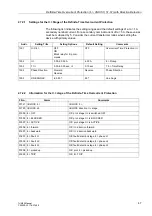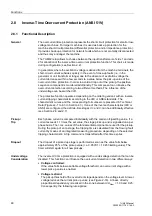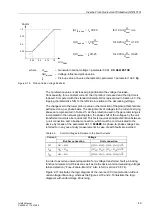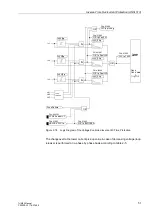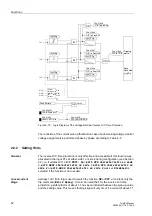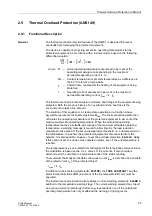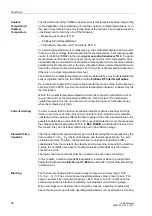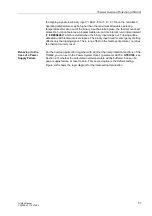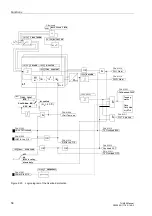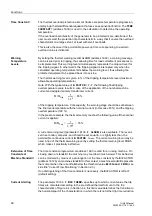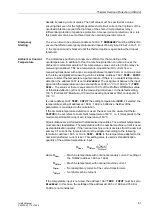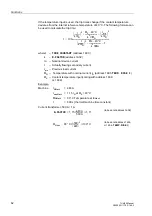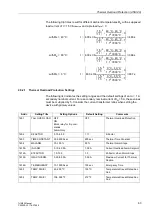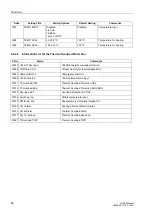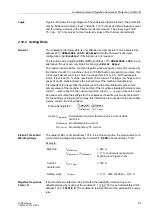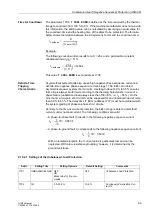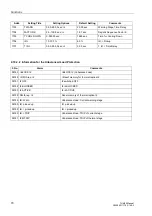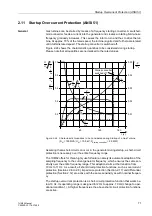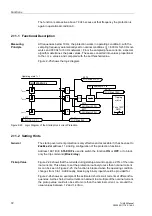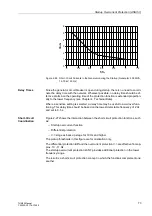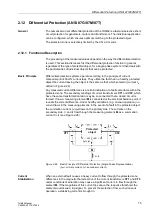
Functions
60
7UM62 Manual
C53000-G1176-C149-3
Time Constant
τ
The thermal overload protection element tracks excessive temperature progression,
employing a thermal differential equation that uses an exponential function. The
τ
(address
) is used in the calculation to determine the operating
temperature.
If the overload characteristic of the generator to be protected is pre-determined, the
user must select the protection trip characteristic in a way that it covers the overload
characteristic to a large extent, at least with small overloads.
This is also the case if the permissible power-up time corresponding to a certain
overload value is indicated.
Warning
Temperature
Levels
By setting the thermal warning level
ALARM (address
), a warning message
can be issued prior to tripping, thus allowing time for load curtailment procedures to
be implemented. This warning level simultaneously represents the dropout level for
the tripping signal. In other words, the tripping signal is interrupted only when the
calculated operating temperature falls below the warning level, thus allowing the
protected equipment to be placed back into service.
The thermal warning level is given in % of the tripping temperature level (maximum
allowable operating temperature).
Note: With the typical value of
=
1.1
, the following final tripping
overtemperature value results in case of the application of the nominal machine
current and adapted primary transformer current:
of the tripping temperature. Consequently, the warning stage should be set between
the final overtemperature with the nominal current (in this case 83 %) and the tripping
overtemperature (100 %).
In the present example, the thermal memory reaches the following value if the nominal
current is applied:
A current warning level (parameter
) is also available. The level is
set in secondary amperes, and should be set equal to, or slightly less than, the
permissible continuous current
·
I
N sec
. The current warning level may be
used in lieu of the thermal warning level by setting the thermal warning level
100 %
,
which makes it practically ineffective.
Extension of Time
Constants at
Machine Standstill
The time constant programmed at address
is valid for a running machine. On
slowing down or standstill, the machine may cool down much slower. This behaviour
can be modeled by means of a prolongation of the time constant by the
(address
) on machine standstill. In this context, a machine standstill represents
the moment when the current falls below the threshold value
(see
side title ”Current Flow Monitoring” in Section 2.3).
If no distinguishing of the time constants is necessary, the
t-FACTOR is left at
1
(default setting).
Current Limiting
The parameter
specifies up to which current value the trip
times are calculated according to the pre-defined thermal formula. In the trip
characteristics of Figure 4-4 in Section 4.4, this limit value determines the transition to
the horizontal part of the characteristics, in which there is no further trip time reduction
Θ Θ
Trip
⁄
1
1 1
,
2
------------
83 %
=
=
Θ Θ
Trip
⁄
1
1 15
,
2
---------------
76 %
=
=


